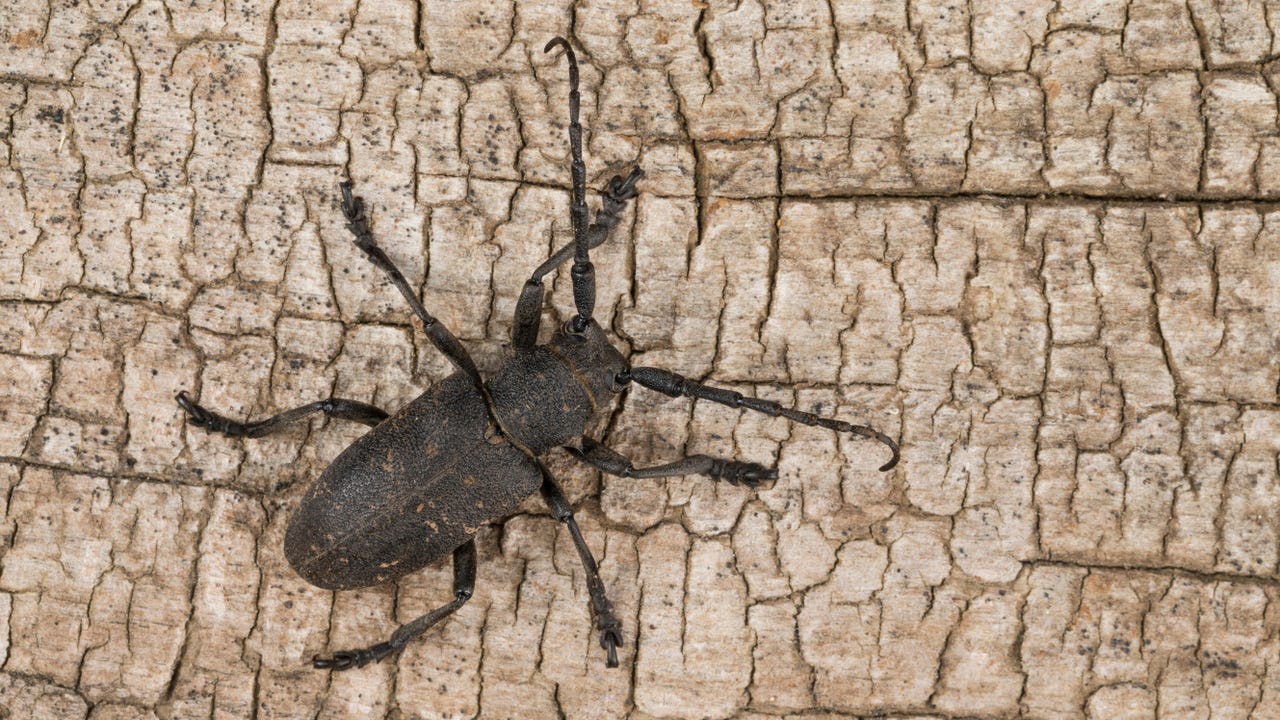Scientists Gene-Hack Spider to Produce Bright-Red Silk
Researchers used the popular gene-editing technique CRISPR to modify the DNA sequences of house spiders, causing them to produce red fluorescent silk. Scientists are hoping that the US Navy and Air Force-funded research could lead to the development of new "supermaterials" TK, Fast Company reports. As detailed in a paper published in the journal Angewandte Chemie, a team of researchers at the University of Bayreuth, Germany, a team injected the eggs of unfertilized female spiders with a CRISPR-Cas9 solution to insert a gene sequence for a red fluorescent protein. After mating with males of the same species, the offspring produced […]


Researchers used the popular gene-editing technique CRISPR to modify the DNA sequences of house spiders, causing them to produce red fluorescent silk.
Scientists are hoping that the US Navy and Air Force-funded research could lead to the development of new "supermaterials" produced by arachnids, Fast Company reports.
As detailed in a paper published in the journal Angewandte Chemie, a team of researchers at the University of Bayreuth in Germany injected the eggs of unfertilized female spiders with a CRISPR-Cas9 solution to insert a gene sequence for a red fluorescent protein. After mating with males of the same species, the offspring produced red, fluorescent silk, demonstrating that the experiment had been successful.
"Considering the wide range of possible applications, it is surprising that there have been no studies to date using CRISPR-Cas9 in spiders," said senior author and University of Bayreuth professor Thomas Scheibel in a statement. "We have demonstrated, for the first time worldwide, that CRISPR-Cas9 can be used to incorporate a desired sequence into spider silk proteins, thereby enabling the functionalisation of these silk fibres."
Apart from turning their silk bright red, the researchers also attempted to knock out a gene called sine oculis, which is responsible for the development of spider eyes. They found that the gene edit caused total or partial eye loss in experiments, highlighting its important role in visual development.
By applying CRISPR-Cas9, a technique that has already been widely used to create custom medical treatments or make farm animals more resilient to diseases, the researchers are hoping to come up with a new generation of silk fibers.
"Successful spider silk engineering in vivo will, therefore, help to develop and employ new fiber functionalities for a broad range of applications," the team wrote in its paper. "So far, genetic modifications in spiders have been only aimed at evolutionary and developmental research."
As Fast Company points out, materials scientists have already been investigating the tactile strength of the silk produced by gene-modified silkworms. But thanks to cutting-edge gene-editing techniques, researchers could soon harness the unique advantages of spider silk as well.
While the researchers didn't single out specific use cases for future "supermaterials," the possible applications are practically endless, from lightweight body armor to ultralight running shoes.
"The ability to apply CRISPR gene-editing to spider silk is very promising for materials science research — for example, it could be used to further increase the already high tensile strength of spider silk," Scheibel explained.
More on CRISPR: In a World First, CRISPR Drug Tailored for One Baby Shows Life-Saving Promise
The post Scientists Gene-Hack Spider to Produce Bright-Red Silk appeared first on Futurism.
















































































































































































![[The AI Show Episode 150]: AI Answers: AI Roadmaps, Which Tools to Use, Making the Case for AI, Training, and Building GPTs](https://www.marketingaiinstitute.com/hubfs/ep%20150%20cover.png)
![[The AI Show Episode 149]: Google I/O, Claude 4, White Collar Jobs Automated in 5 Years, Jony Ive Joins OpenAI, and AI’s Impact on the Environment](https://www.marketingaiinstitute.com/hubfs/ep%20149%20cover.png)











































































































































































_GvHa2ZS.png?width=1920&height=1920&fit=bounds&quality=70&format=jpg&auto=webp#)


























































































_ArtemisDiana_Alamy.jpg?width=1280&auto=webp&quality=80&disable=upscale#)


.webp?#)










































































































![WWDC 2025 May Disappoint on AI [Gurman]](https://www.iclarified.com/images/news/97473/97473/97473-640.jpg)
![Apple to Name Next macOS 'Tahoe,' Switch to Year-Based OS Names Like 'macOS 26' [Report]](https://www.iclarified.com/images/news/97471/97471/97471-640.jpg)
![Sonos Father's Day Sale: Save Up to 26% on Arc Ultra, Ace, Move 2, and More [Deal]](https://www.iclarified.com/images/news/97469/97469/97469-640.jpg)




































































